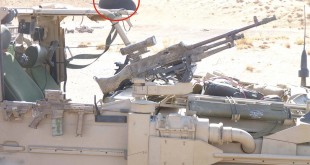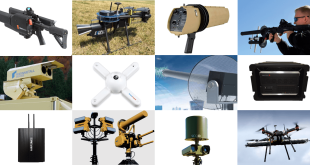Revolutionizing the Battlefield: High-Speed 3D Printing Enables On-Demand Military Systems From drones to bunkers, breakthrough 3D printers now deliver complex military hardware anytime, anywhere. Introduction Additive manufacturing, commonly known as 3D printing, has seen remarkable advancements in recent years, revolutionizing industries ranging from aerospace to healthcare. However, one of the …
Read More »Quantum Computing in the Defense and Aerospace Industry: The Next Technological Frontier
Quantum Computing in Defense and Aerospace How quantum breakthroughs are transforming military strategy, cybersecurity, and aerospace innovation at global scale. Quantum computing is poised to revolutionize multiple sectors, and the defense and aerospace industry is no exception. The ability of quantum computers to solve complex problems exponentially faster than classical …
Read More »Global Head-Up Display (HUD) Market: Trends, Growth, and Future Outlook
HUDs Go Mainstream: Transforming Cars, Cockpits, and Beyond From fighter jets to factory floors, Head-Up Displays are redefining how we see and interact with the world. The Head-Up Display (HUD) is an advanced multimedia system that projects real-time critical information within the driver’s or pilot’s field of vision, minimizing distractions …
Read More »DARPA’s Quantum Benchmarking Program: A Key Step Toward the Future of Quantum Computing
DARPA’s Quantum Benchmarking Program: Paving the Roadmap to Real-World Quantum Advantage A groundbreaking DARPA initiative is setting practical benchmarks to measure quantum computing’s progress and unlock its transformative potential. Quantum computing has the potential to revolutionize a wide range of scientific and industrial fields, from drug discovery to materials science …
Read More »Acoustic Vector Sensors (AVS): Revolutionizing Battlefield Surveillance Against RAM, Ground Vehicles, and UAVs
Acoustic Vector Sensors: The Stealthy Game-Changer in Modern Military Surveillance How next-gen AVS technology is reshaping battlefield intelligence—from drone detection to sniper localization and naval defense. Acoustic sensor networks have become a vital component of modern military defense systems, offering an advanced capability to detect, classify, and neutralize threats based …
Read More »Motor Driver Technology: Driving the Future of Electrification and More Electric Aircraft
Motor Driver Technology: Enabling the Electrified Future of Aerospace and Automation From eVTOL aircraft to factory robotics, motor drivers are quietly powering the next wave of innovation. Motor drivers are at the core of modern motion control systems, enabling the precise control of electric motors across a wide range of …
Read More »Communications Constellations: Linking the Planet at Light Speed
Communications Constellations: Linking the Planet at Light Speed From remote villages to deep oceans, satellite constellations are revolutionizing global connectivity, IoT, and secure communications. Introduction: Connecting the Unconnected Communications constellations are redefining the concept of global connectivity by bridging the digital divide and bringing high-speed internet to the most remote …
Read More »Securing the Skies: Militaries Assessing Cutting-Edge Counter-UAV Solutions Against Drone-Borne Threats
Securing the Skies: Militaries Deploy Cutting-Edge Counter-UAV Tech With drone-borne threats on the rise, global militaries are turning to advanced detection, jamming, and AI-based defense systems to neutralize the airborne menace. Introduction: In recent years, the proliferation of drones has presented a significant challenge for military forces worldwide. The emergence …
Read More »Unlocking the Future of Medicine: The Promise and Challenges of RNA Synthesis
Can We Produce RNA Medicines Without Harming the Planet? As RNA therapies reshape modern medicine, innovators are racing to build cleaner, scalable, and more sustainable ways to synthesize the molecule that could cure everything from cancer to rare genetic diseases. The COVID-19 pandemic thrust RNA into the spotlight, showcasing its …
Read More »Future Smart Energy Buildings: Requirements and Technologies
Future Smart Energy Buildings: The Tech-Powered Revolution in Urban Sustainability Discover how AI, IoT, and renewable energy are reshaping tomorrow’s buildings into smart, sustainable ecosystems. Introduction As urbanization accelerates and climate concerns intensify, the demand for energy-efficient, technologically advanced buildings has never been greater. Future smart energy buildings are poised …
Read More » International Defense Security & Technology Your trusted Source for News, Research and Analysis
International Defense Security & Technology Your trusted Source for News, Research and Analysis









